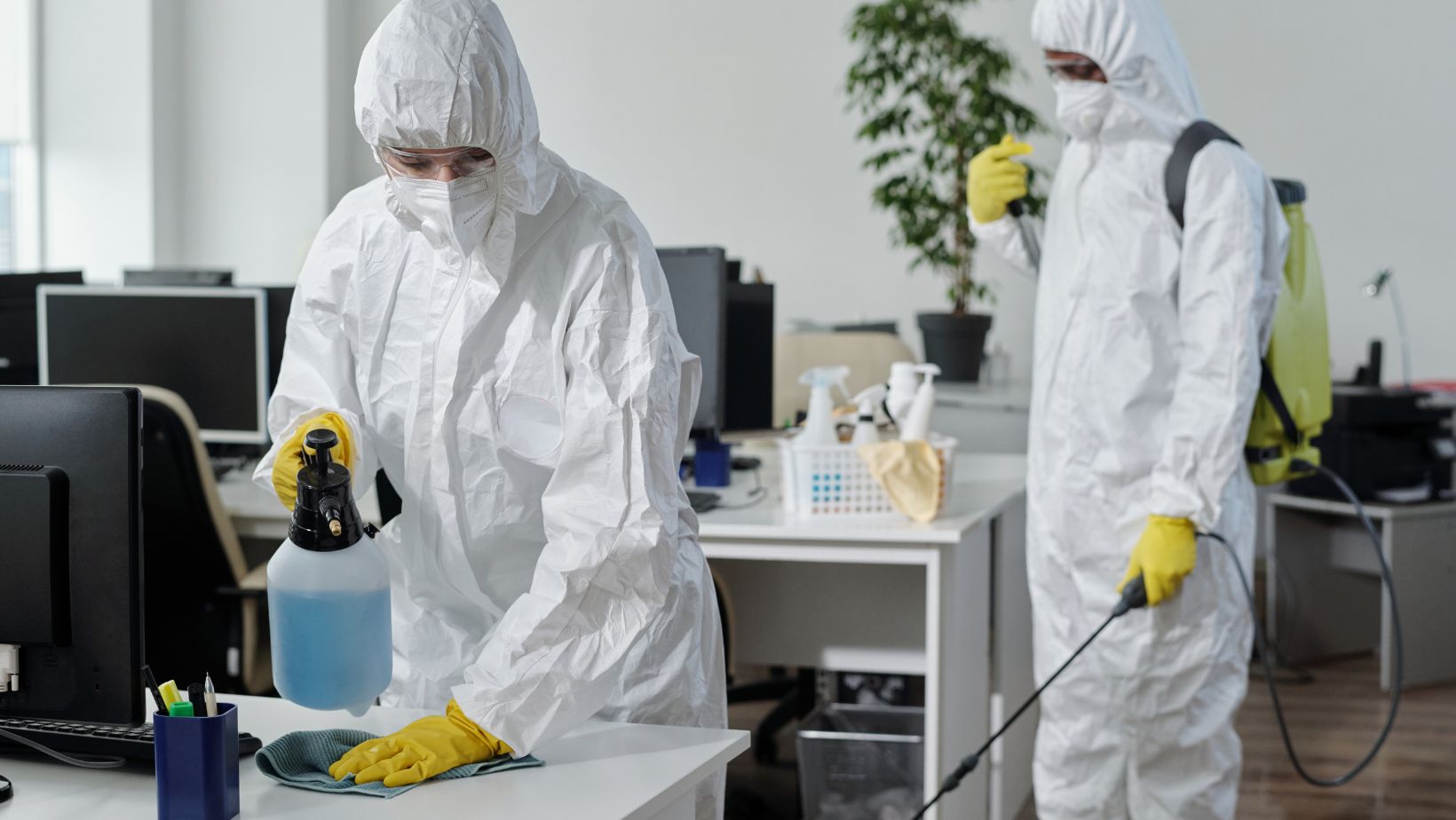Deprecated: mb_convert_encoding(): Handling HTML entities via mbstring is deprecated; use htmlspecialchars, htmlentities, or mb_encode_numericentity/mb_decode_numericentity instead in /var/www/vhosts/baboon-project.org/httpdocs/wp-content/plugins/skylinks/skylinks.php on line 38
 Protective workwear plays a crucial role in enhancing safety in the workplace. Wearing the appropriate gear significantly reduces the risk of injury and promotes a culture of safety among employees. Various industries rely on this specialized clothing to protect workers from hazards, ensuring that they can perform their tasks with greater confidence.
Protective workwear plays a crucial role in enhancing safety in the workplace. Wearing the appropriate gear significantly reduces the risk of injury and promotes a culture of safety among employees. Various industries rely on this specialized clothing to protect workers from hazards, ensuring that they can perform their tasks with greater confidence.
From helmets and gloves to high-visibility vests, the proper workwear is essential for preventing accidents. Additionally, it helps organizations comply with safety regulations while boosting employee morale and productivity. By prioritizing protective gear, businesses send a strong message about their commitment to worker safety.
Investing in quality protective workwear not only safeguards health but also fosters a proactive approach to workplace safety. This article will explore the different types of protective clothing available, their significance, and how they contribute to a safer work environment.
Understanding Protective Workwear
Protective workwear is essential for ensuring the safety and well-being of employees in various work environments. It encompasses a range of clothing and equipment designed to minimize exposure to hazards. Different types of protective workwear meet specific needs while adhering to established standards and regulations.
Types of Protective Workwear
Protective workwear includes several categories, each designed for specific hazards. Common types are:
- High-Visibility Clothing: Used in environments where workers are exposed to traffic or machinery. It ensures they are easily seen.
- Flame-Resistant Gear: Essential for preventing burns in environments involving heat or flames, such as welding or cooking.
- Chemical-Resistant Clothing: Made from materials that provide barriers against hazardous substances, crucial in chemical handling jobs.
- Impact-Resistant Gear: Includes gloves, knee pads, and helmets designed to protect against physical injuries from falls or collisions.
- Cold Weather Gear: Insulated and waterproof options protect against extreme temperatures, ensuring workers remain safe and comfortable.
Each category aims to address specific risks in the workplace.
Standards and Regulations
Protective workwear must comply with various standards and regulations to ensure effectiveness and safety. These include:
- OSHA (Occupational Safety and Health Administration): Sets forth guidelines for personal protective equipment (PPE) in the workplace. Employers are required to assess hazards and provide appropriate gear.
- ANSI (American National Standards Institute): Establishes performance standards for high-visibility clothing, ensuring they meet visibility requirements.
- ASTM (American Society for Testing and Materials): Offers test methods and specifications for materials used in protective clothing.

Adhering to these regulations helps in the selection and use of appropriate protective workwear, enhancing workplace safety. Employers should regularly review compliance and update practices as needed.
Implementing Protective Workwear in the Workplace
To enhance safety, effective implementation of protective workwear involves thorough risk assessment and employee engagement. Selecting the right gear and providing proper training is crucial for maximizing workplace safety.
Risk Assessment and Workwear Selection
A comprehensive risk assessment identifies potential hazards in the workplace. This assessment should consider factors such as:
- Nature of the work: The specific tasks employees perform.
- Environmental conditions: Elements like temperature, moisture, and exposure to chemicals.
Based on the assessment, appropriate workwear must be selected. For example, workers exposed to chemicals might need chemical-resistant gloves and suits, while those working in extreme temperatures may require insulated gear. Ensuring that workwear meets industry standards and regulations is essential.
Employers should also consider employee comfort. Ill-fitting or heavy workwear can reduce productivity and increase risk. Thus, involving employees in the selection process can lead to better acceptance and compliance.
Employee Training and Engagement
Training plays a significant role in the successful implementation of protective workwear. Employees must be educated about the specific hazards they may face and the importance of wearing protective gear. This training should cover:
- Proper use of workwear: How to correctly wear and maintain the equipment.
- Situational awareness: Recognizing when additional precautions are necessary.
Engaging employees in discussions about safety can foster a culture of responsibility. Regular workshops or safety meetings keep safety at the forefront of employees’ minds. Encouraging feedback on comfort and functionality of workwear can guide future selections.
Ultimately, a collaborative approach enhances adherence to safety practices and reduces workplace injuries. With effective training and active participation, protective workwear can significantly improve workplace safety.
Assessing the Effectiveness of Protective Workwear
Evaluating the effectiveness of protective workwear involves examining performance metrics and establishing feedback mechanisms for ongoing enhancements. These aspects ensure that the workwear not only meets safety standards but also evolves based on real-world usage.
In high-risk industries, protective workwear plays a crucial role in safeguarding employees from potential hazards. Whether you work in construction, petrochemicals, or manufacturing, ensuring that your staff is equipped with appropriate safety gear can significantly reduce the risk of accidents. For a comprehensive look at industrial workwear solutions, explore BeSafe’s flame-retardant workwear, designed to offer maximum protection in hazardous environments. Investing in high-quality safety wear is an essential step toward maintaining a safe workplace.
Performance Metrics
Key performance metrics for protective workwear include durability, comfort, and protection level. Employers often use standards set by organizations such as ANSI (American National Standards Institute) and ISO (International Organization for Standardization) to gauge compliance.

Testing methods can include:
- Impact Resistance: Assessing how well materials absorb shocks.
- Cut Resistance: Evaluating fabric resilience against sharp objects.
- Waterproofing: Checking the effectiveness in wet conditions.
Feedback from users is crucial. Wearers can report on the comfort and functionality of the workwear, influencing future designs. Regular assessments of these metrics ensure that products meet ongoing safety requirements.
Continuous Improvement and Feedback Loops
Incorporating continuous improvement through user feedback enhances protective workwear. Establishing feedback loops allows for systematic collection of user insights regarding the effectiveness of gear.
Methods for gathering feedback may include:
- Surveys: Capturing user experiences and satisfaction levels.
- Focus Groups: Engaging with employees to discuss potential improvements.
- Incident Reports: Analyzing safety incidents to identify performance gaps.
Manufacturers can utilize this information to adjust designs and materials, ensuring that the workwear evolves to meet changing workplace conditions. Regularly updating training and information based on wearers’ experiences promotes better safety outcomes.
Innovations in Protective Workwear
The landscape of protective workwear is evolving swiftly, driven by advancements in technology and a growing focus on sustainability. These innovations enhance safety, comfort, and environmental responsibility.
Technological Advancements
Recent technological advancements have significantly improved protective workwear. Smart fabrics are gaining traction, offering features such as temperature regulation and moisture-wicking capabilities.
Wearable technology integrated into workwear includes personal alert systems and health monitoring sensors. These devices provide real-time data, enhancing worker safety in hazardous environments.
Additionally, enhanced protective materials, like lighter and more flexible composites, allow for greater mobility without sacrificing safety. Innovations in reflective materials also increase visibility, reducing the risk of accidents.
Sustainability in Workwear Design
Sustainability is becoming a key focus in protective workwear design. Manufacturers are increasingly utilizing recycled and eco-friendly materials in their products.
These materials not only minimize environmental impact but also promote a circular economy. Companies are adopting practices like upcycling and reducing waste during the production process.
Furthermore, biologically-based fibers, such as those derived from natural sources, are being explored for their reduced ecological footprint. Enhanced durability is also a priority, leading to longer-lasting garments that withstand rigorous use, which aids in minimizing waste.